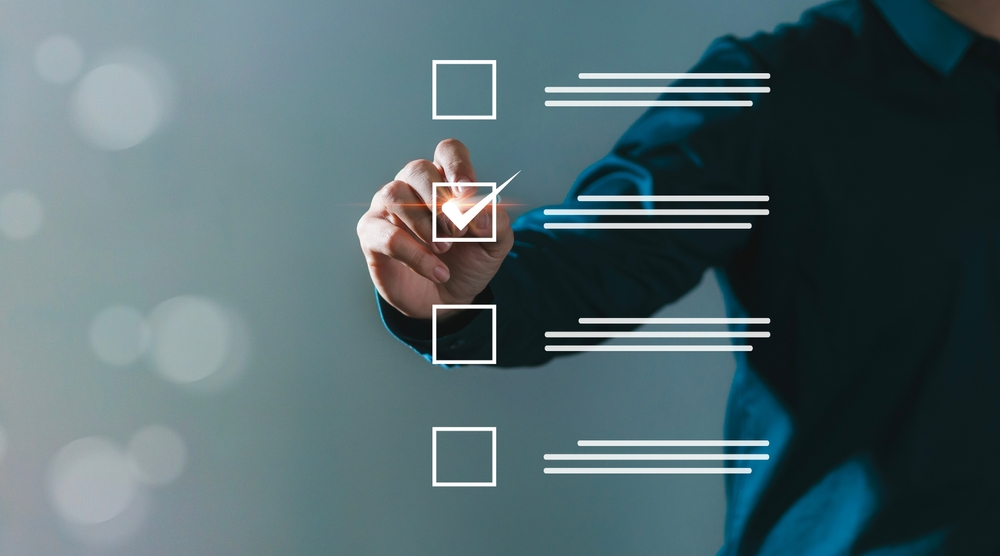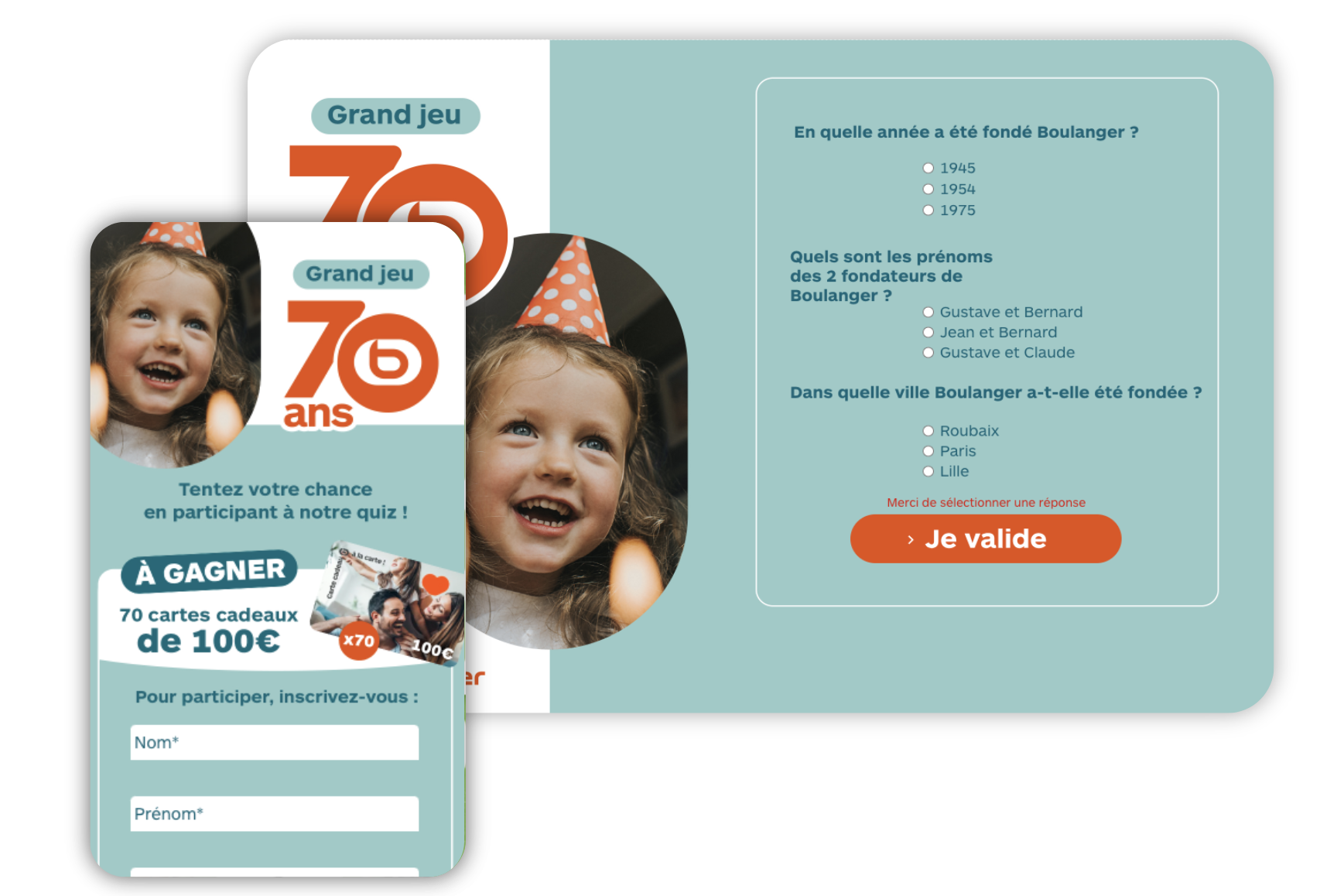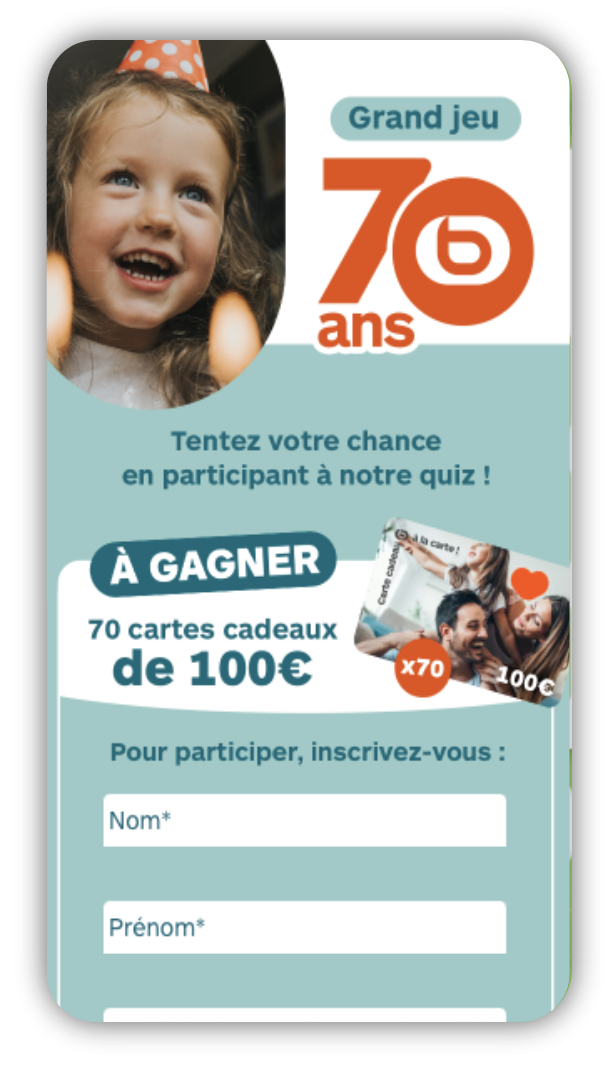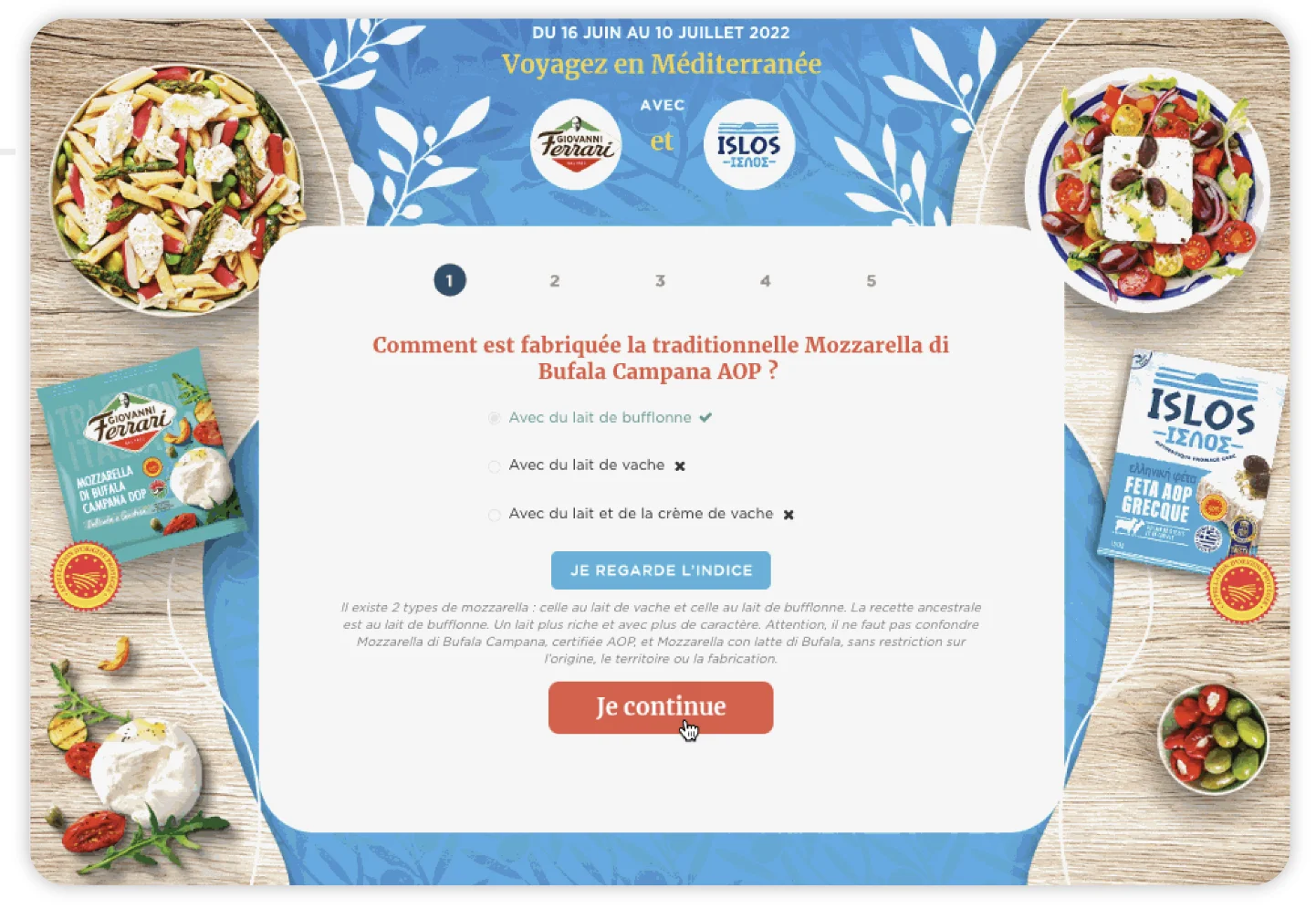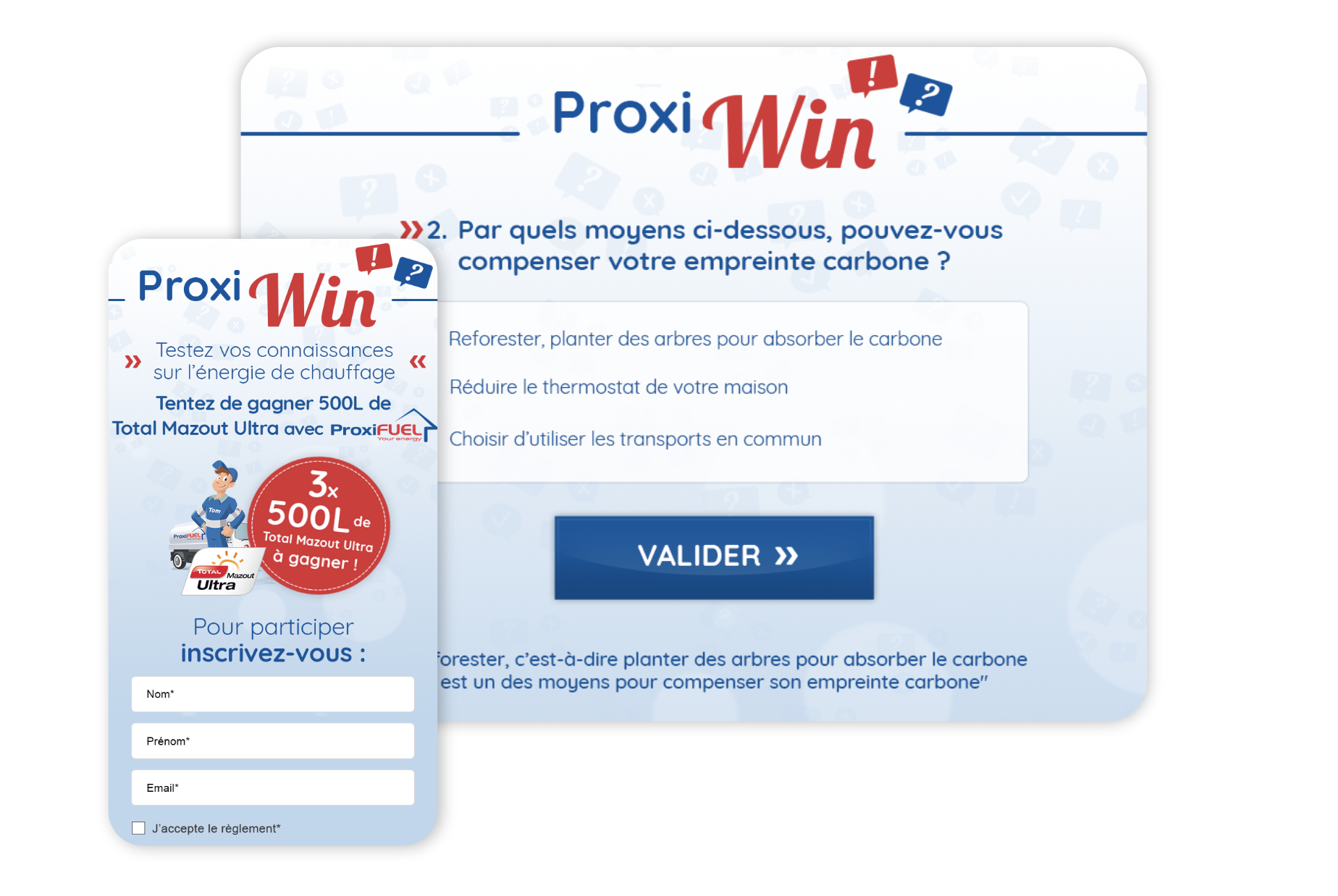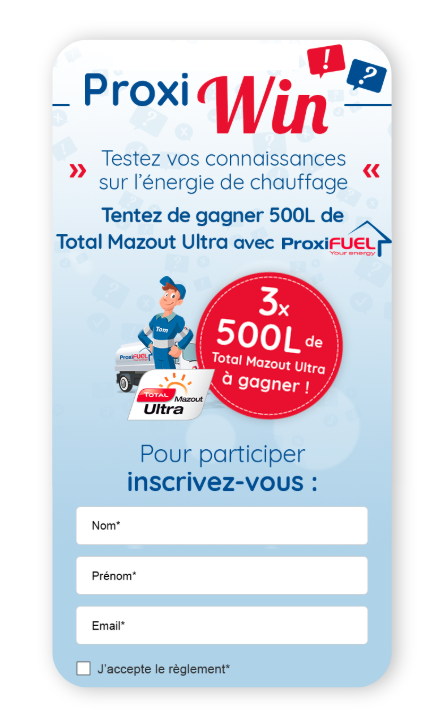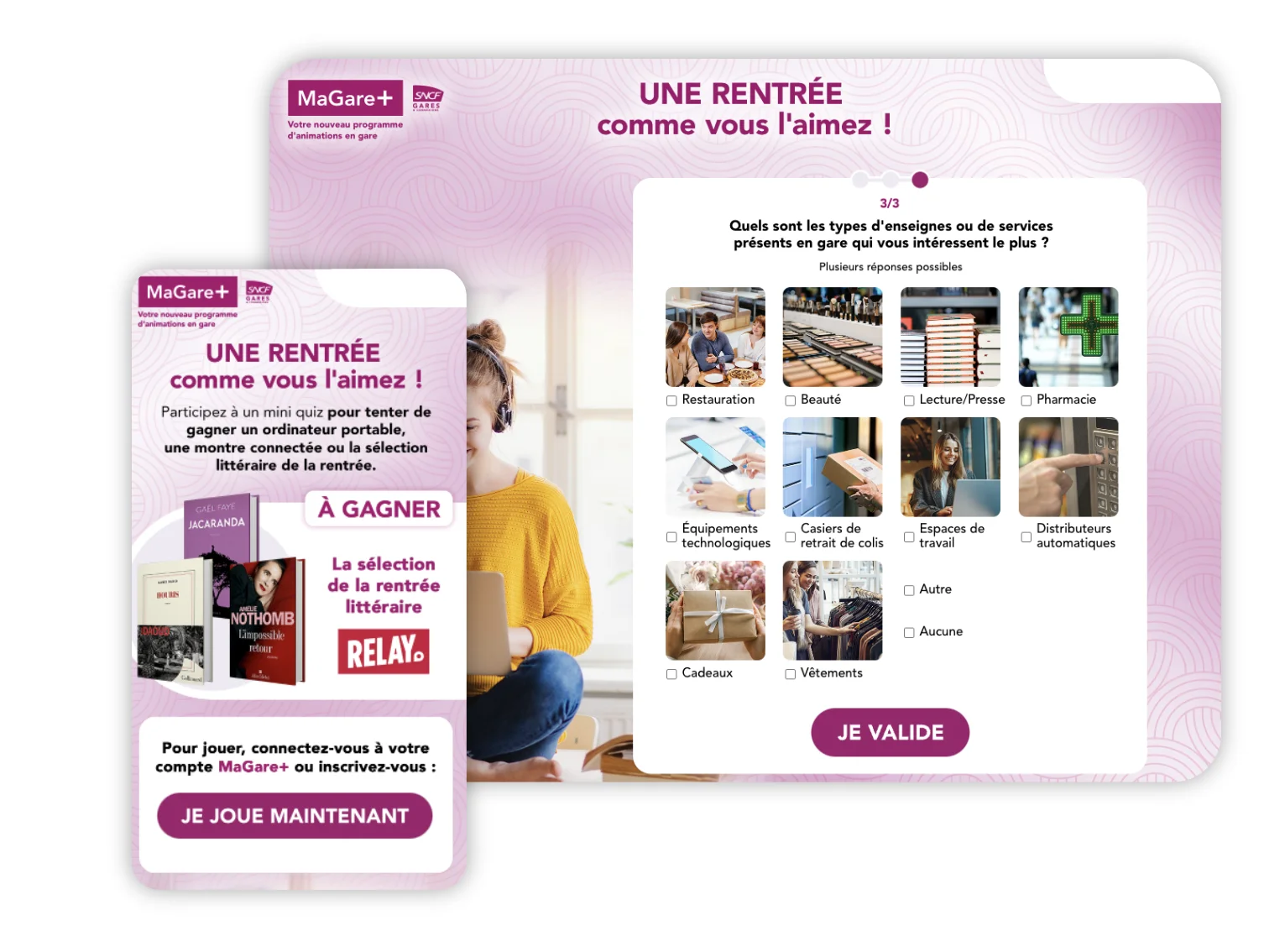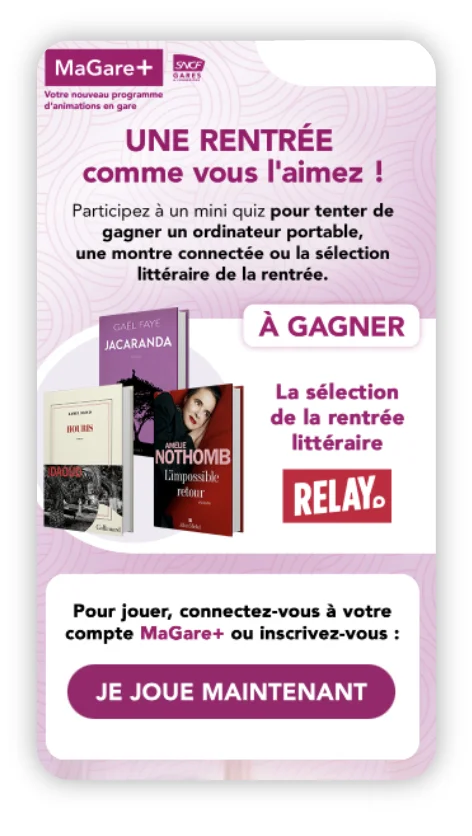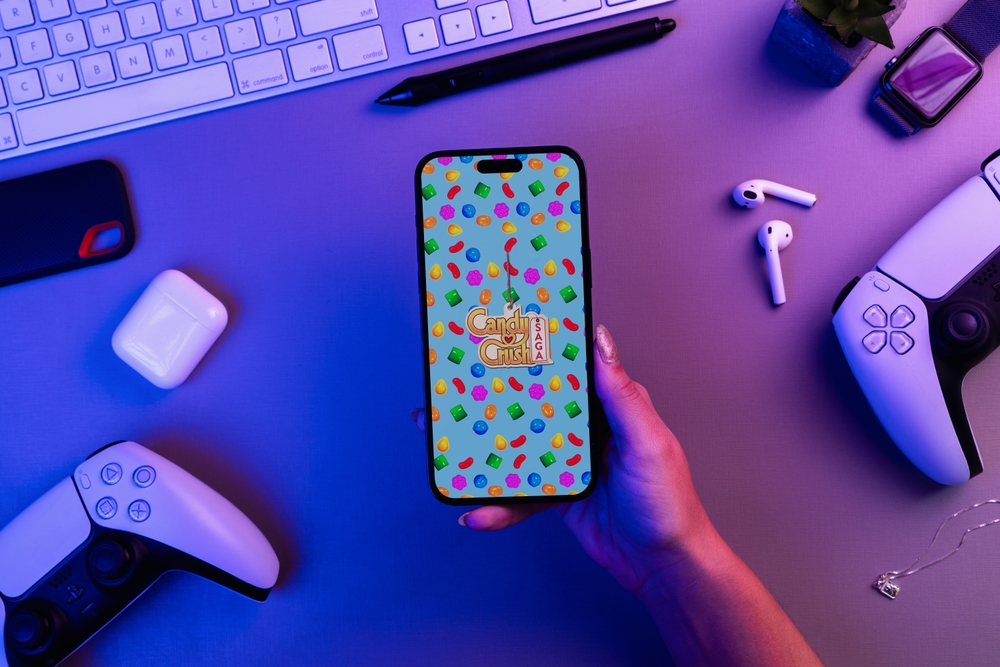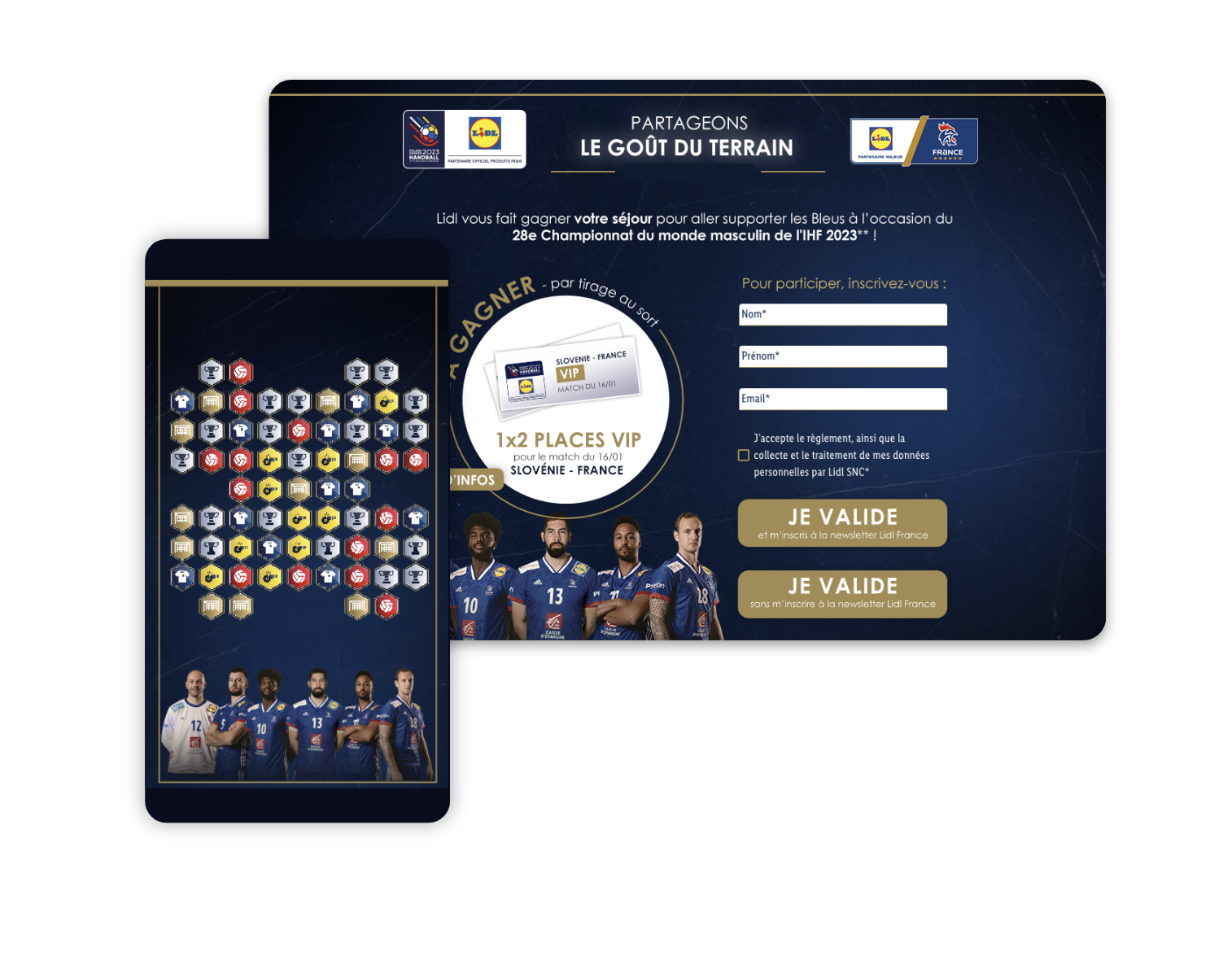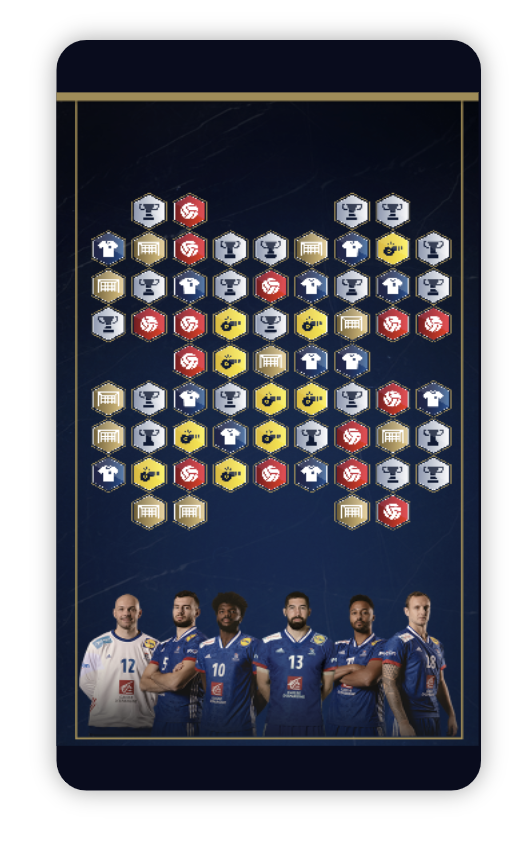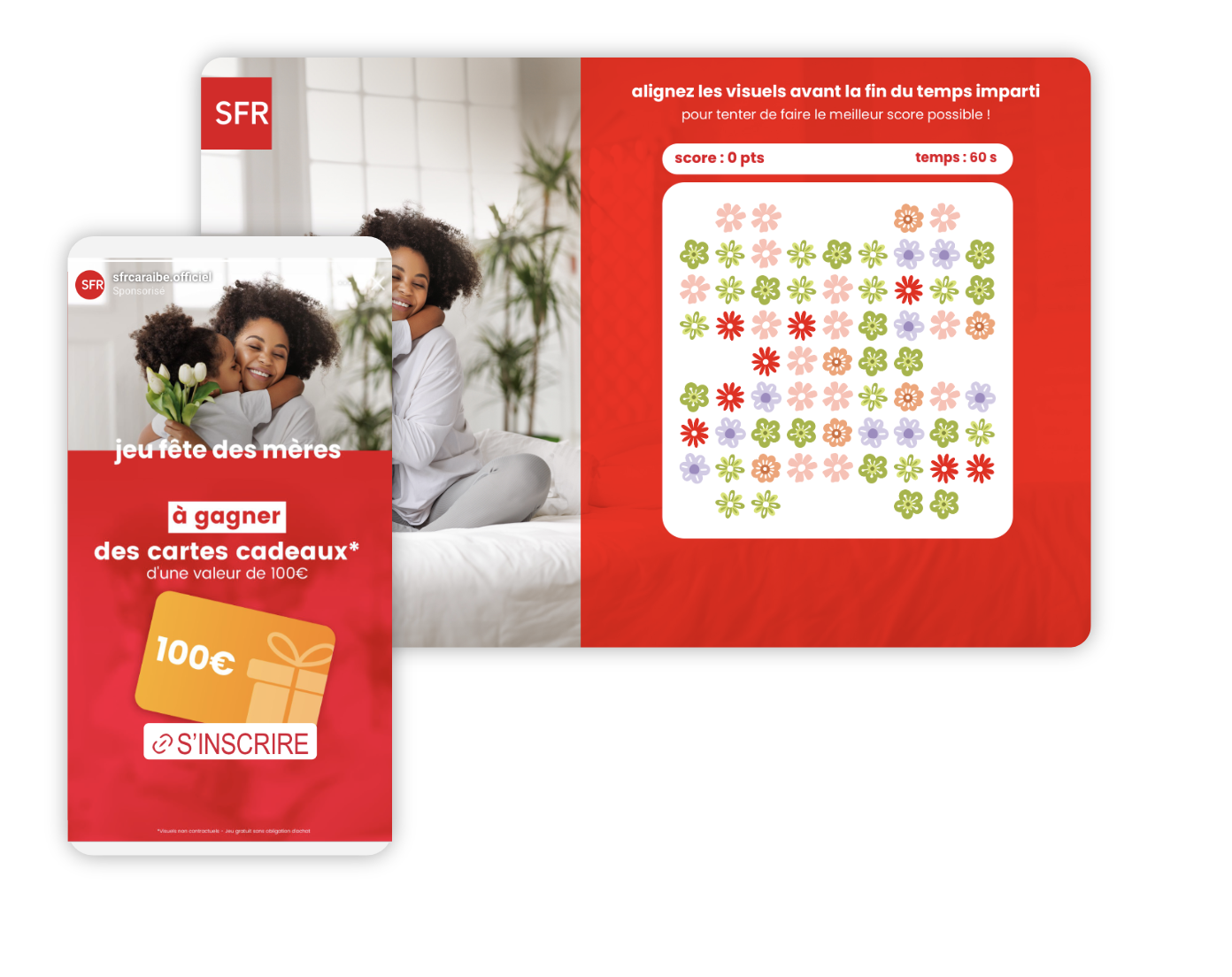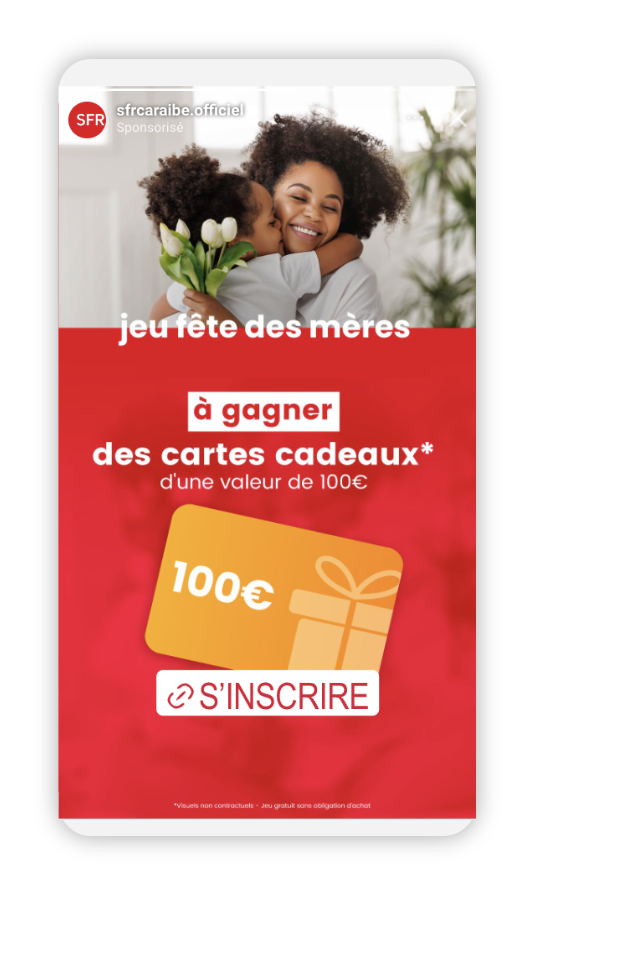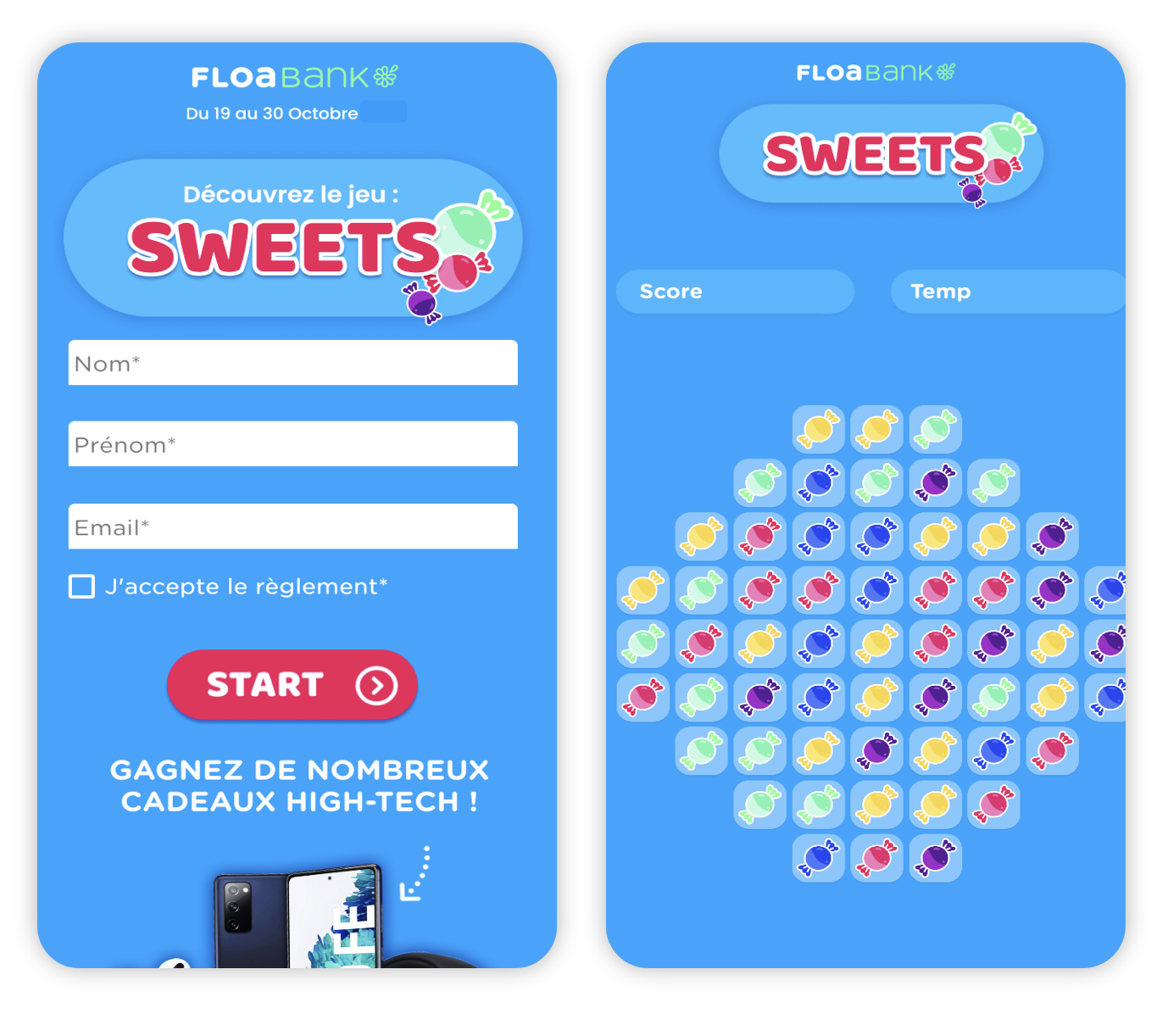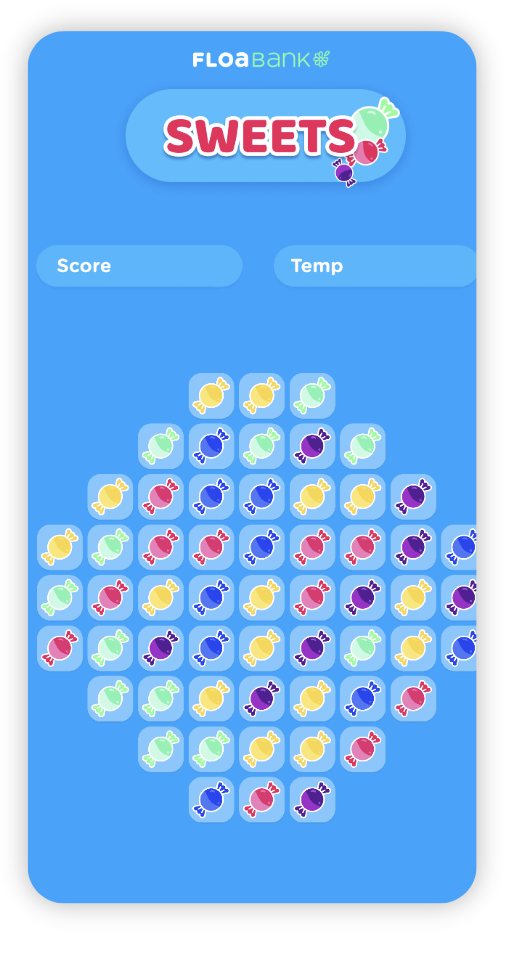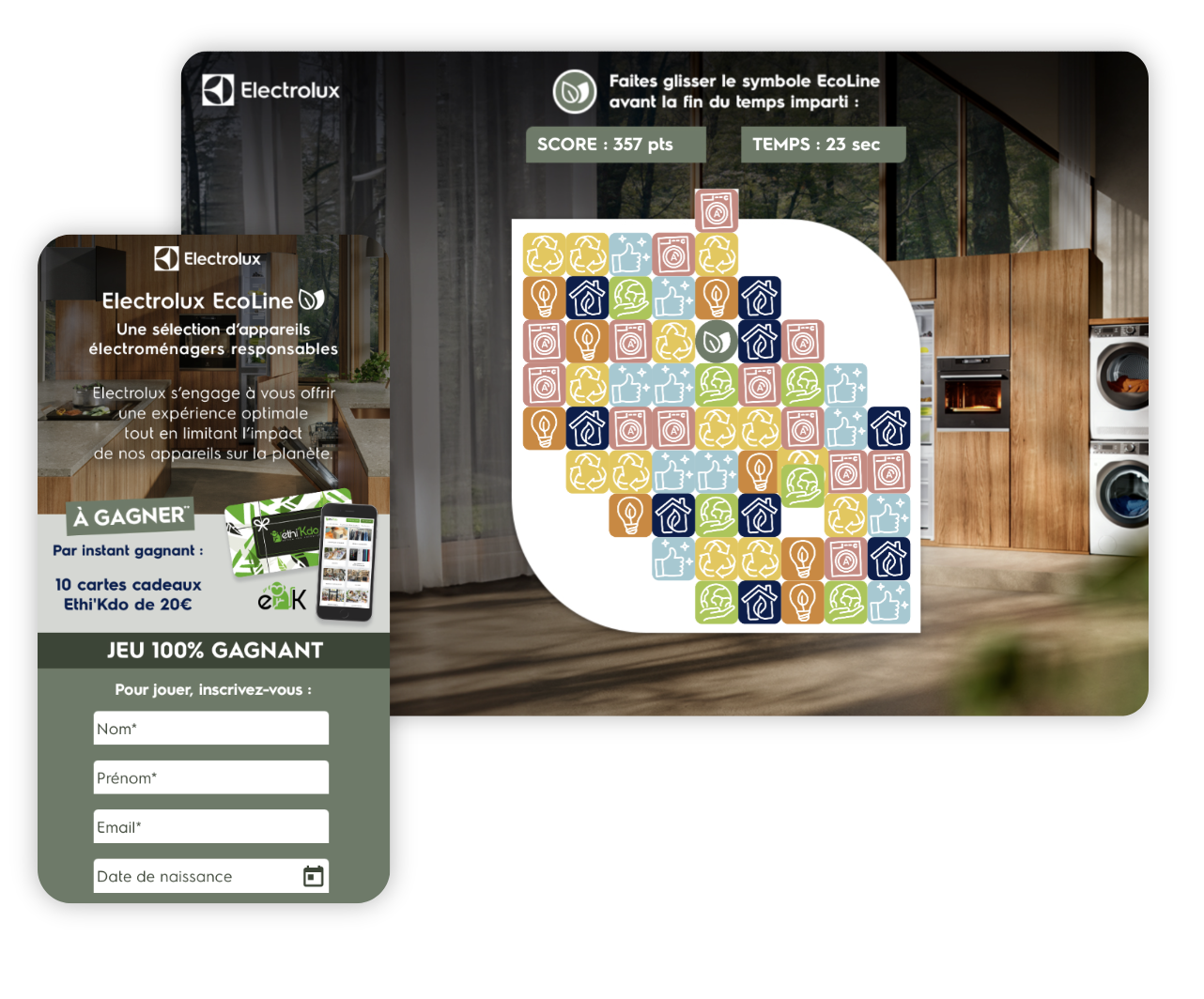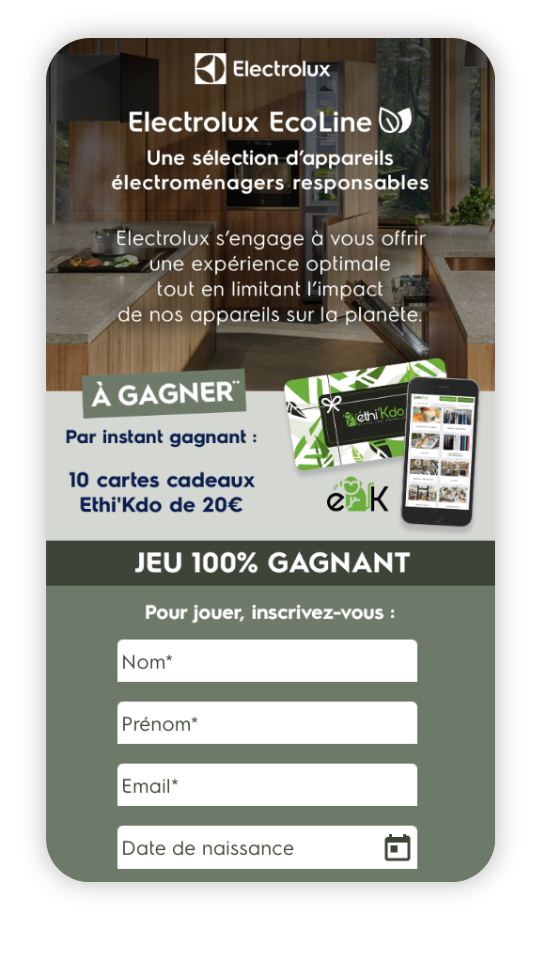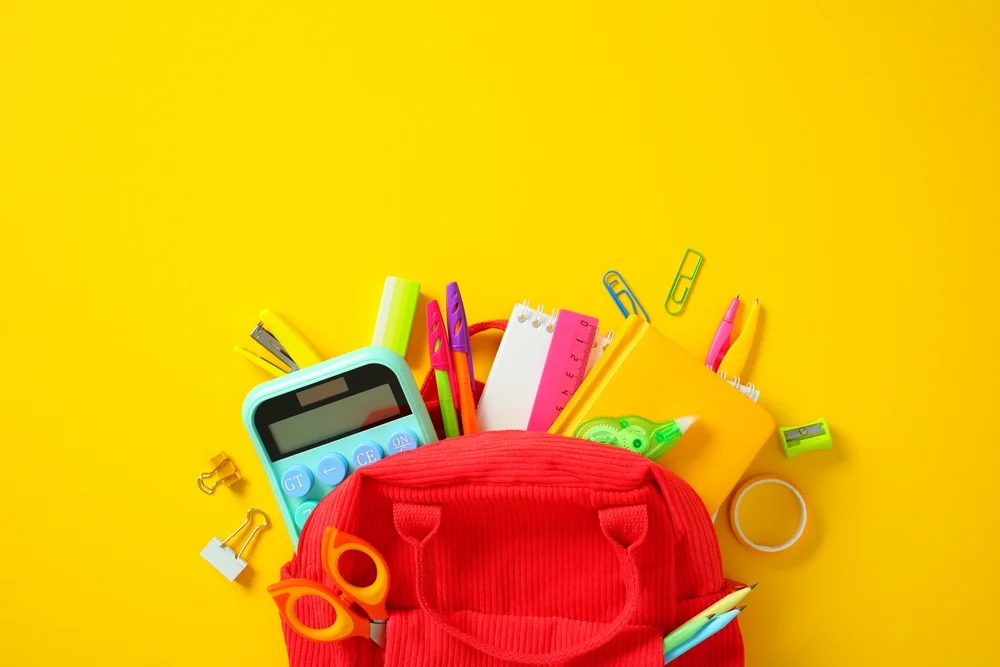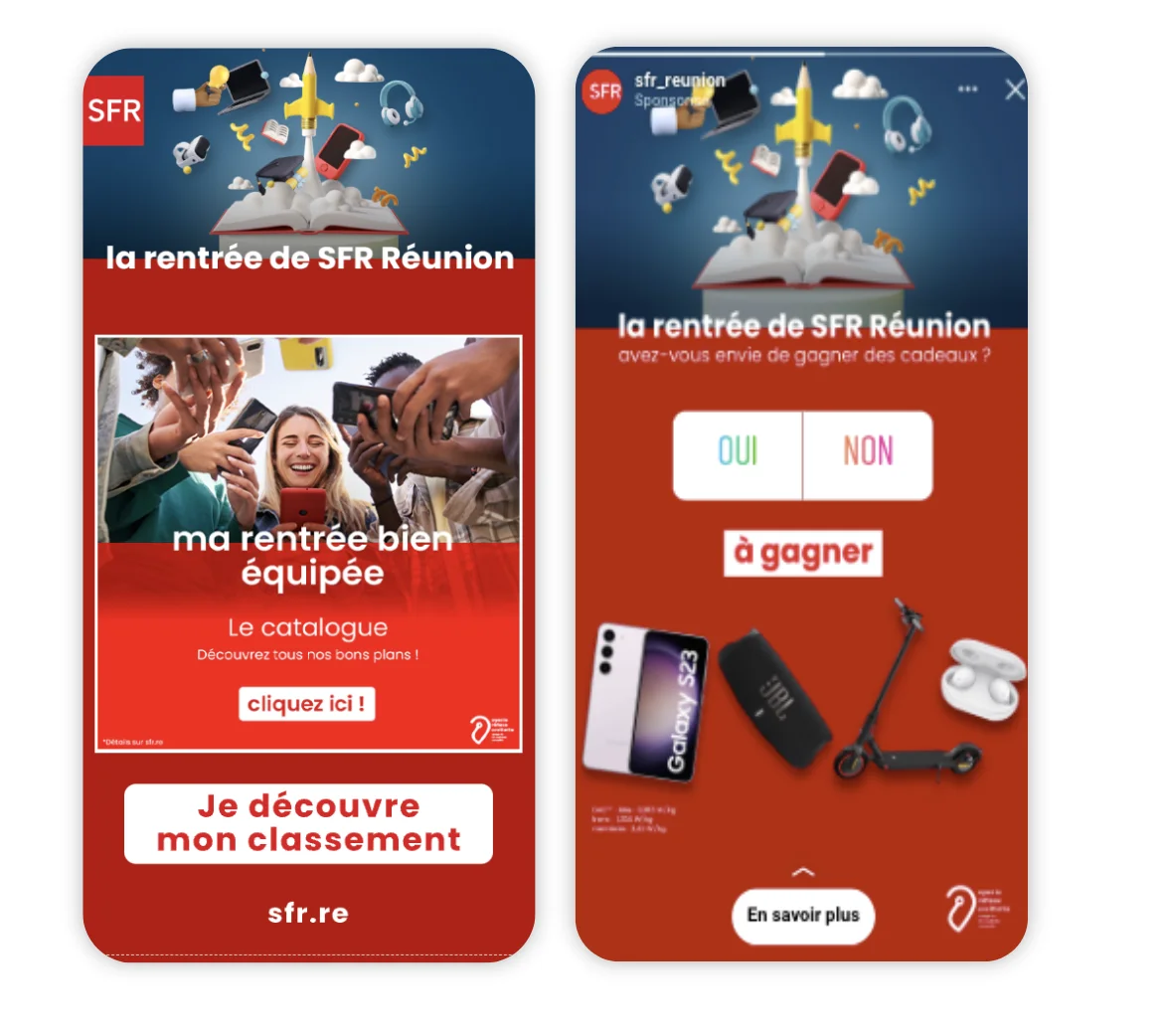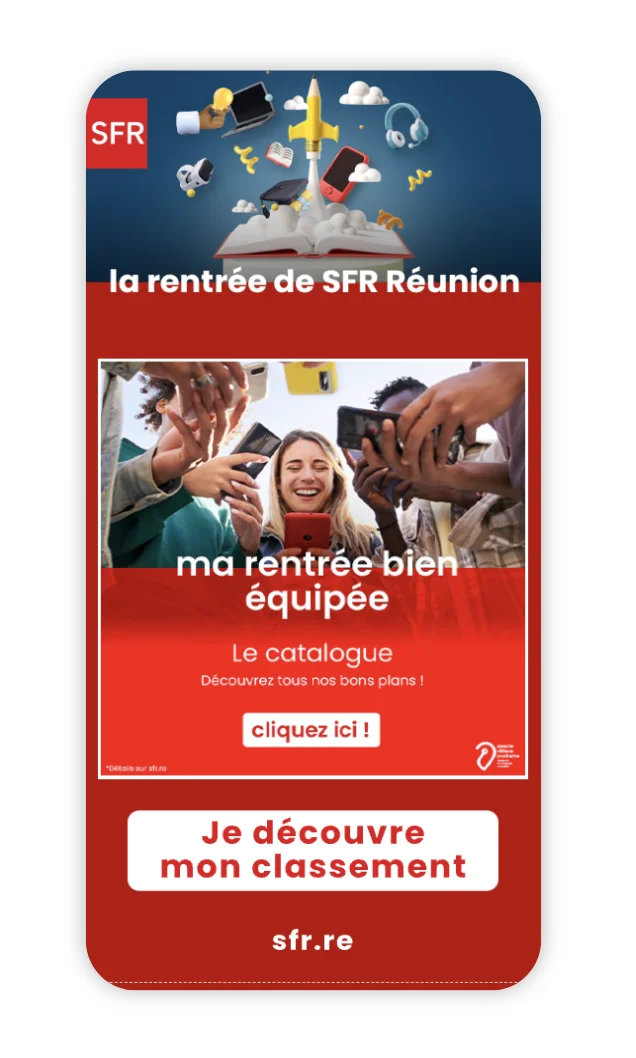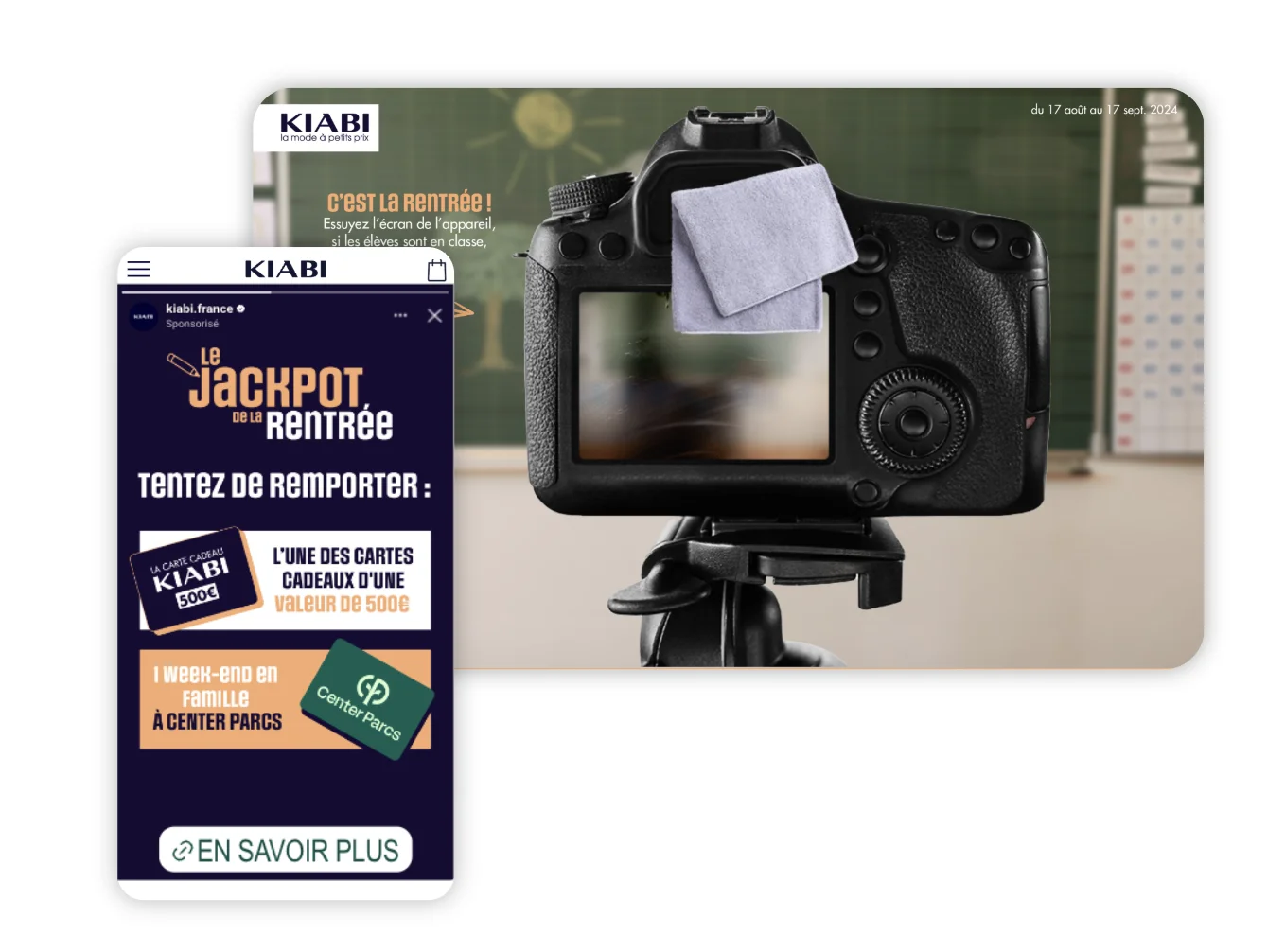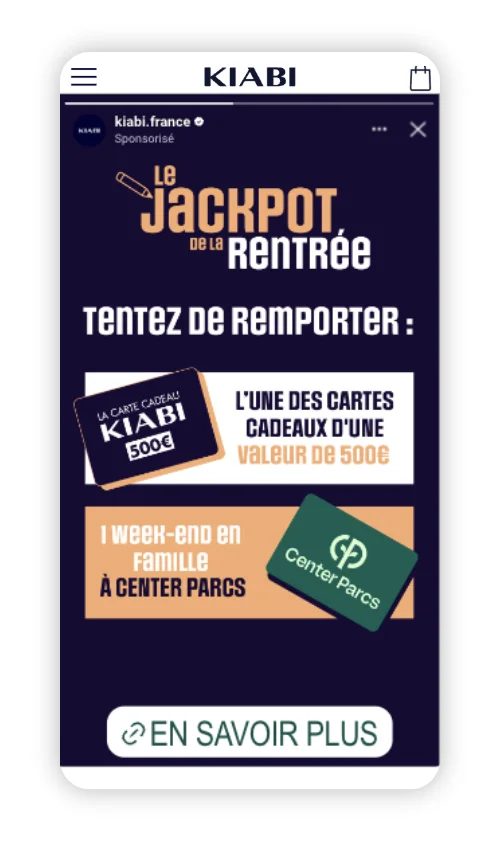
Christmas marketing strategy: 5 interactive and innovative examples
The holiday season is a strategic time for brands. According to a study by the CSA institute for Cofidis, the French spend an average of 323 euros on gifts. It’s crucial to capture their purchasing intentions and take advantage of the month of December to reinforce your presence in consumers’ minds. Broaden your audience and boost sales.
In this guide, we help you refine your Christmas marketing strategy. We explore what your brand can aim to achieve, and provide tips for creating impactful campaigns in the run-up to the holidays.
1. Building brand awareness with a Christmas marketing strategy
Christmas is a time when consumers are receptive to advertising messages, looking for gift ideas and offers. This attention provides an opportunity to increase visibility to a wide audience.
Gamification, or interacting with consumers through playful experiences, is an interesting way of building brand awareness. Games capture attention. They can encourage sharing on social networks, amplifying the reach of the campaign.
Our tips for an effective Christmas campaign:
- Create online competitions: offer Christmas-related challenges.
- Distribute a Quiz to present your brand in a fun, high-impact way.
- Encourage social sharing: Encourage participants to share their scores or experiences on networks to increase visibility.
Example: Crédit Agricole’s Christmas campaign
With “Les Jolis Comptes de Noël”, Crédit Agricole launched a solidarity campaign for the festive season. Each day, the Advent Calendar unveiled content highlighting the bank’s actions. More than just a simple operation, this campaign engaged the community. It was adaptable to the regional caisses, reinforcing the brand’s local roots.
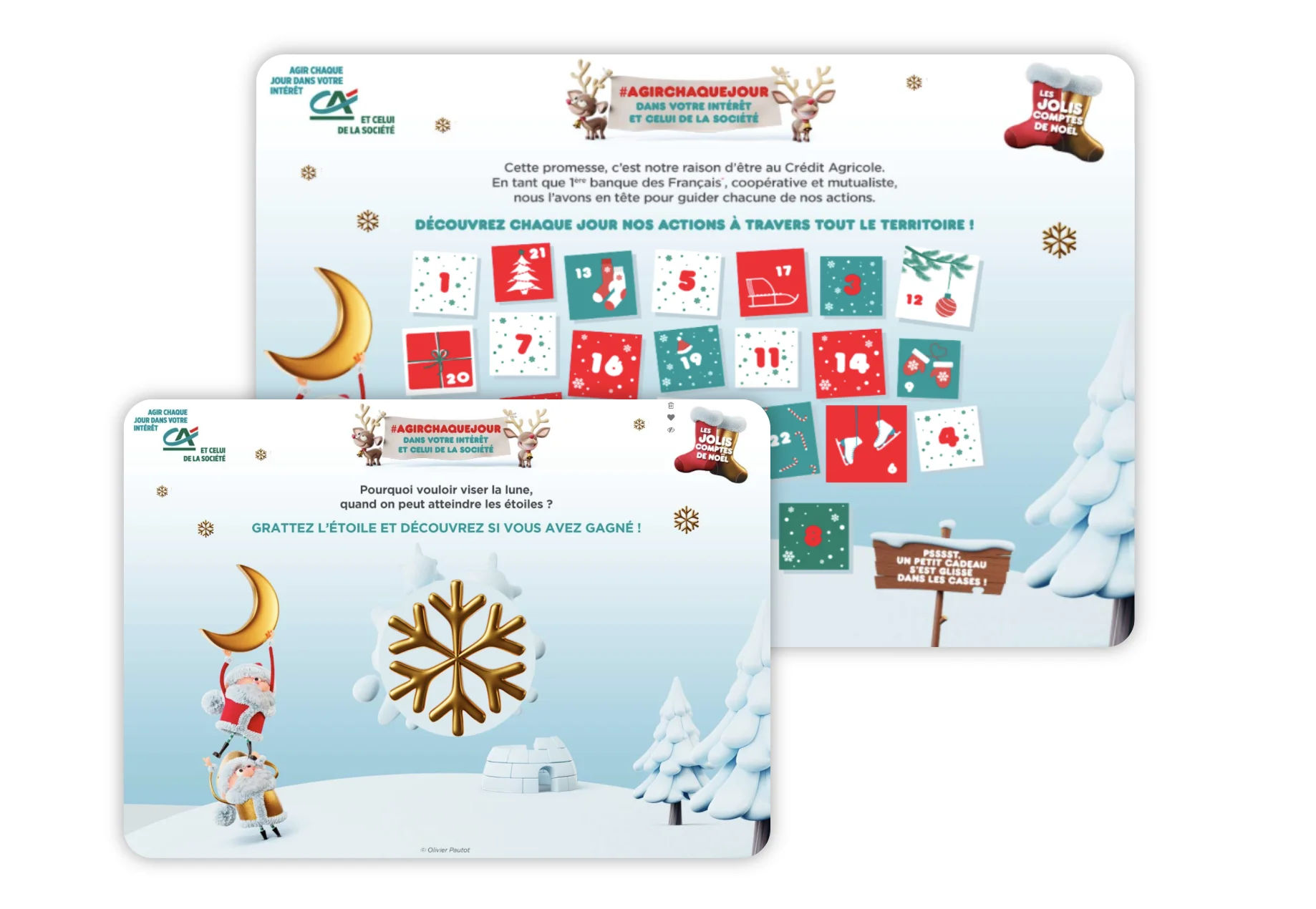
2. Bringing in-app users to life over Christmas
Mobile app purchases account for half of all online sales. It’s crucial to attract consumers to this channel, and animate users to maintain their interest for the holidays.
Gamification provides brands with features that encourage visitors to return and stay longer on the app. This increase in engagement translates into more purchasing opportunities and a higher average shopping basket.
Our tips for an effective Christmas campaign:
- Integrate time-related games: Add themed mini-games (like an Advent Calendar) to keep users entertained and loyal over the long term.
- Offer rewards: Offer promotions or products accessible via the application.
- Energize the in-app purchase journey at every stage. Brands can integrate a quiz at the beginning of the journey to collect customer preferences and offer better recommendations. At the checkout stage, they can propose a Winning Instant and put discount coupons into play. Offer rewards: Propose promotions or products accessible via the app.
Example: Showroomprivé’s Christmas campaign
Showroomprivé launched an Advent Calendar on its app to maximize its visibility at Christmas time. Thanks to the presence of numerous partners, the operation attracted a high level of response from users, with almost 500,000 registrations. Engagement was also high, with 1.1 million boxes opened and 10.5 million pages viewed, offering partners excellent visibility throughout the game.
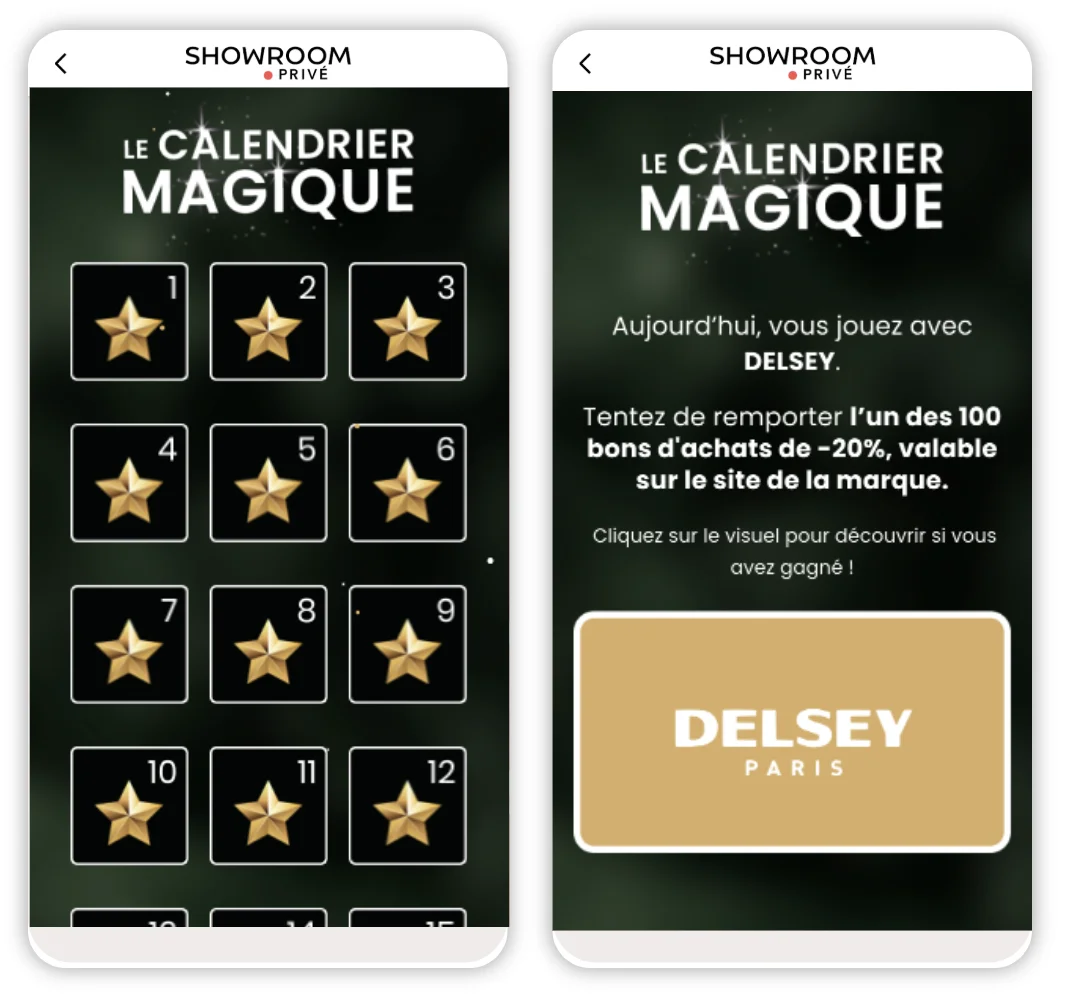
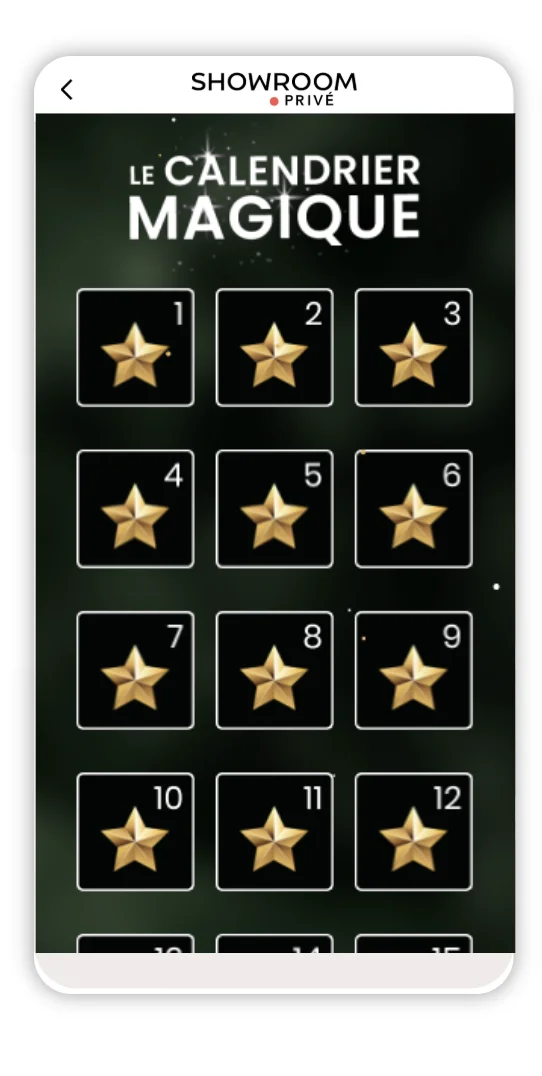
3. Generate new leads with your Christmas marketing strategy
As the holiday season approaches, consumers are on the lookout for bargains. This makes it easy to collect customer data and generate leads. Playful mechanics encourage users to provide their contact details or give their opt-in in exchange for an entertaining experience or prizes.
Our tips for an effective Christmas campaign:
- Organize contests with registration: Ask participants to sign up to a mailing list or fill in a form for a chance to win Christmas gifts.
- Offer personalized tests: Share quizzes to discover the “ideal gift”, in exchange for an e-mail address to receive the results.
- Use engaging pop-ups: Implement playful pop-ups on your e-commerce site to encourage visitors to sign up for your newsletter (in exchange for a bonus).
Example: Electrolux’s Christmas campaign
Electrolux launched the Atelier des saveurs de Noël campaign with a Match 3 mechanic, with more than two games played per subscriber. An opt-in push was integrated to maximize collection, reinforcing the effectiveness of the campaign. The distribution of prospecting emails via Adictiz Ads enabled us to reach affinity segments targeted according to consumer profiles and verticals, optimizing performance and lead collection.
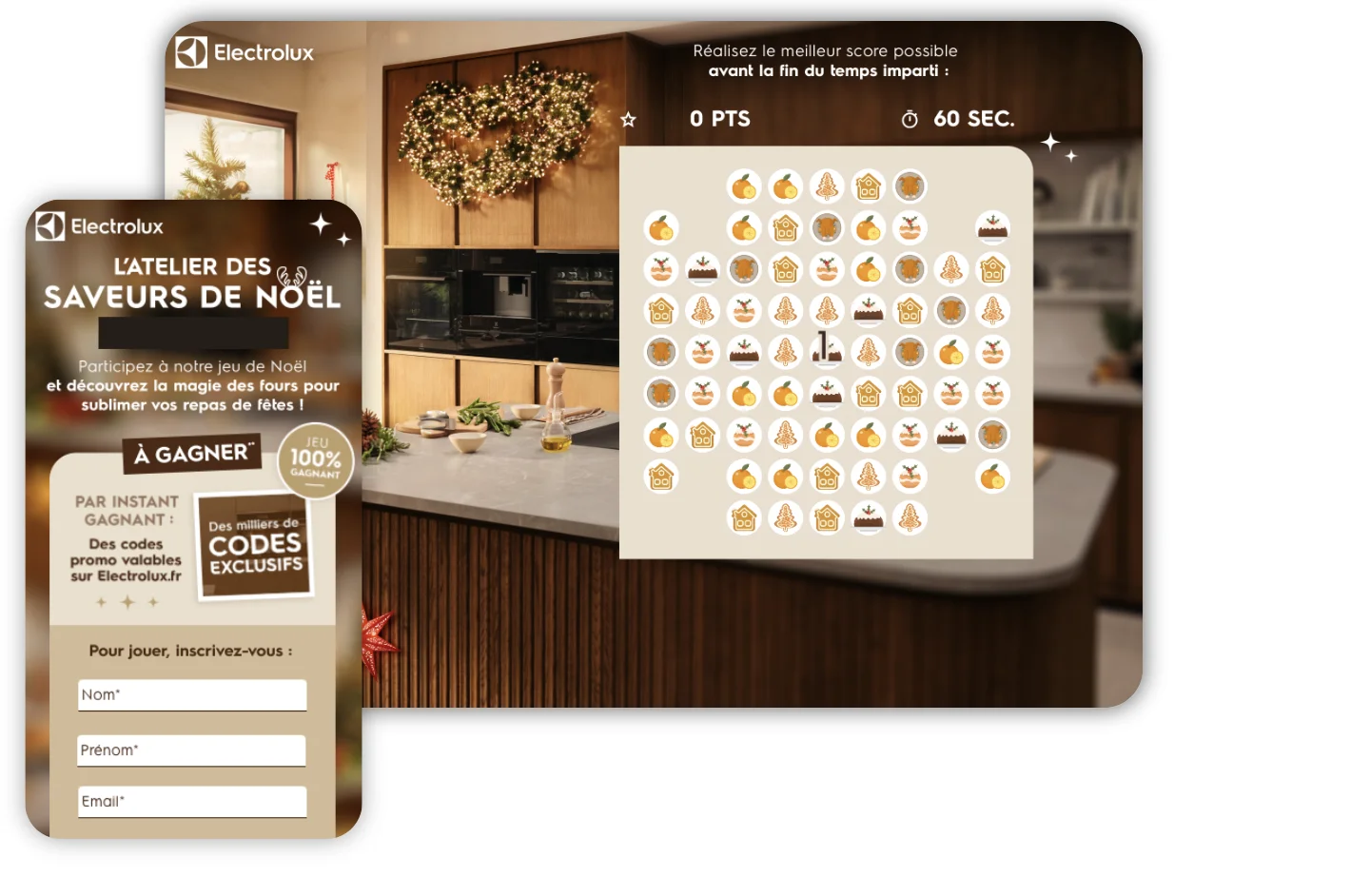
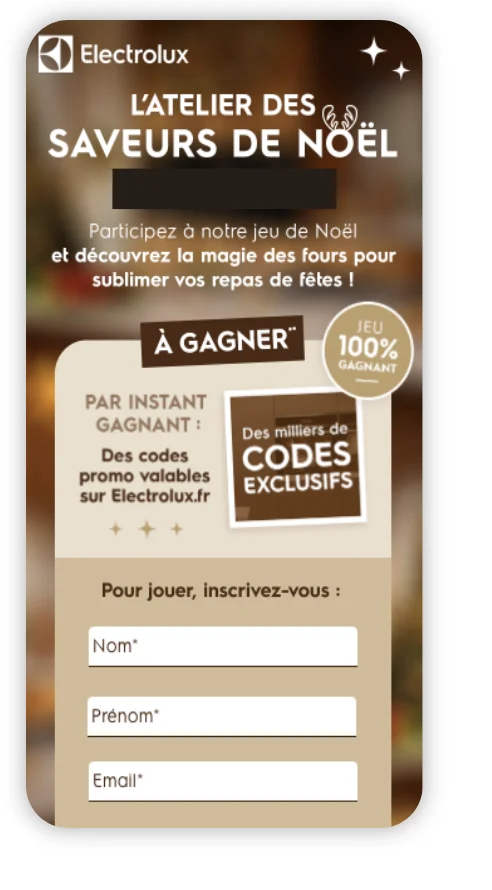
4. Boost conversions during the Christmas holidays
Buying intentions are high during Christmas, making consumers inclined to finalize their purchases to receive their gifts before the 25th. Game mechanics can boost brand conversion by sharing incentives (such as discount coupons). They are excellent tools for guiding users through their experience (via targeted recommendations). They make the customer journey fluid and memorable.
Our tips for an effective Christmas campaign:
- Use competitions to generate UGC and reassure customers. Authentic content, shared by customers, is more effective in boosting conversions.
- Personalize the experience: Use the data collected (via a Survey, a Battle or a Shopping List) to propose product recommendations tailored to users’ preferences.
- Create time-limited offers: Use counters or daily challenges to encourage consumers to complete their purchases.
Example: Showroomprivé’s Christmas campaign
For Christmas, Showroomprivé launched a Grapple game aimed at increasing its visibility and boosting sales with vouchers, by collecting telephone numbers and opt-ins. Nearly 49% of registrants provided their numbers, demonstrating their interest in the brand.
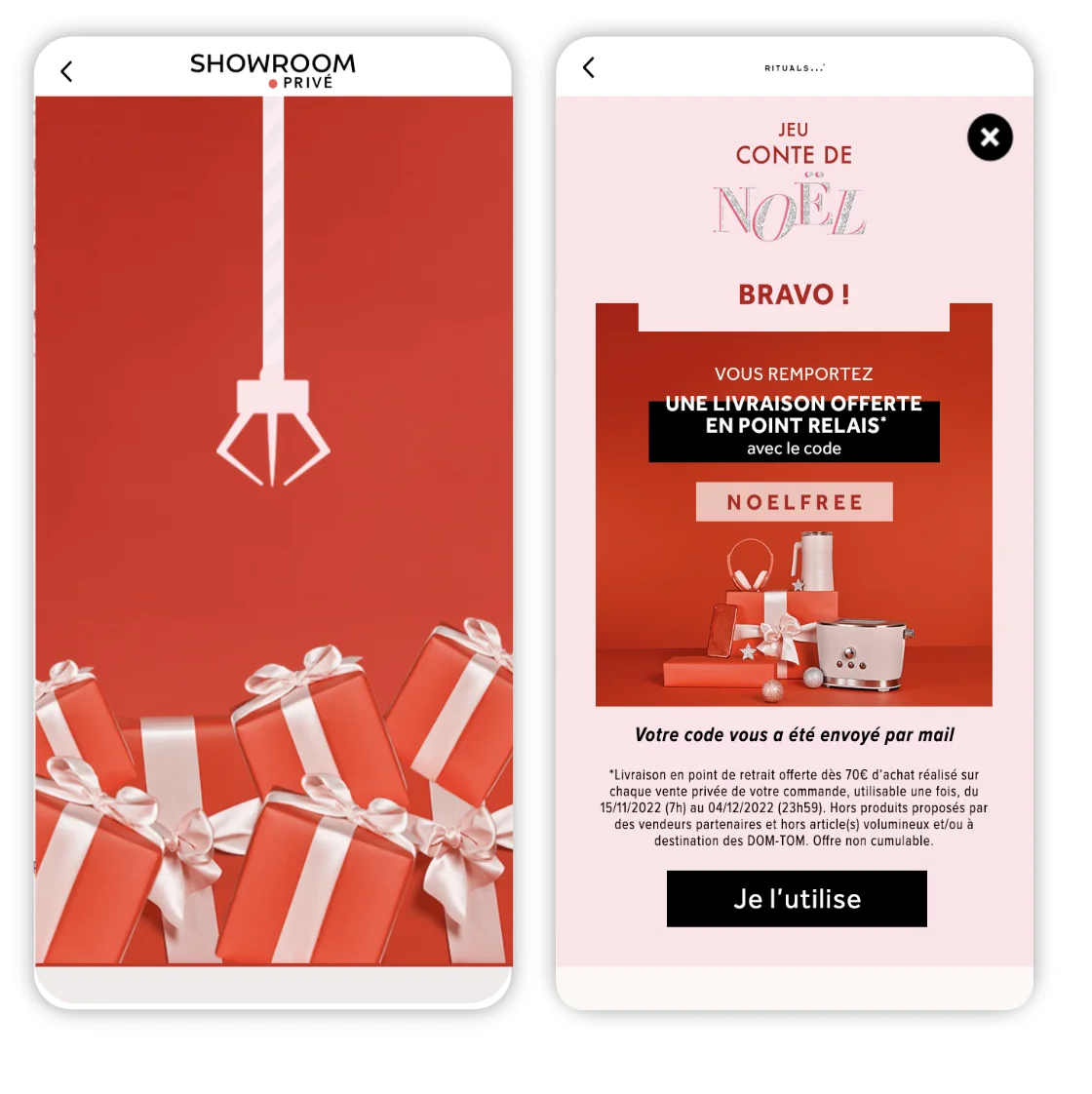
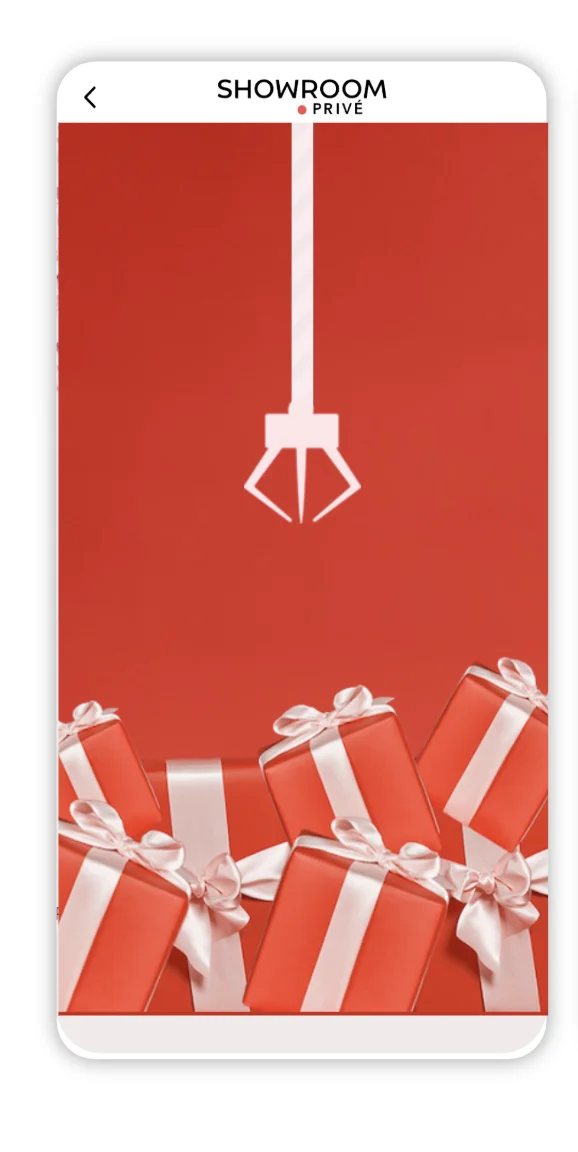
5. A Christmas marketing strategy to build audience loyalty
Last but not least, Christmas is a key marketing period for strengthening ties with customers by offering them memorable experiences or exclusive rewards. Fun and games increase the amount of time spent with the brand. They boost brand loyalty and encourage customers to come back for more.
Our tips for an effective Christmas campaign:
- Launch interactive loyalty programs: Propose challenges or missions to complete in order to accumulate points.
- Organize a digital Advent calendar: Brands create recurrence by offering a surprise or promotion from December 1 to 25.
- Encourage co-creation: Invite customers to participate in product design or vote for the best proposal to reinforce their sense of belonging.
Example: Starbucks’ Christmas campaign
Every year, Starbucks offers limited-edition gift cards designed for the Christmas season. These cards, decorated with festive motifs, are intended as gifts and rewards for loyal customers. This initiative enables Starbucks to keep its customers engaged over the festive period. It also enables Starbucks to boost sales through card refills and reinforce its brand image by associating itself with traditions.
Conclusion
By integrating gamification into your Christmas campaigns, you can achieve a variety of objectives by offering your customers a unique experience. Create playful experiences that reflect your image and engage your audience across your channels: e-commerce site, app, social networks and stores!


